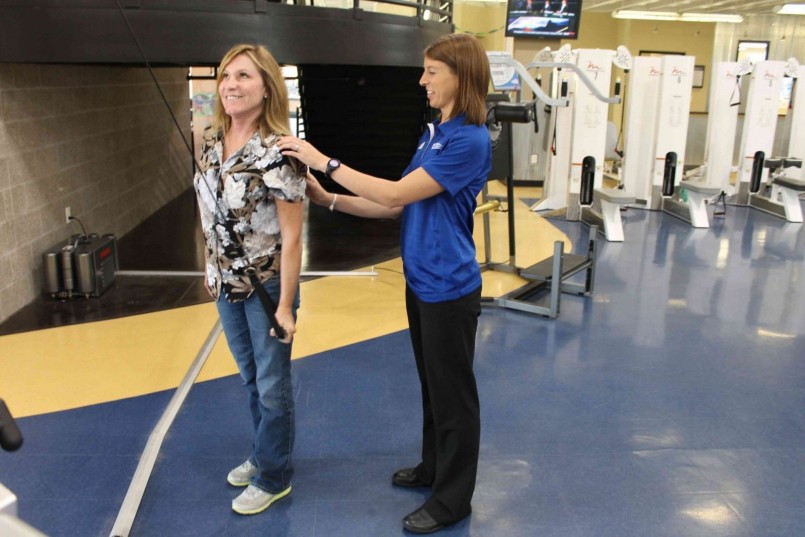When you think of a Physical Therapist (PT) what is the first thing that runs through your mind? Are they words like injury, surgery, rehab or pain? Or maybe you think of PTs in the hospital that help patients walk so they can safely return home. What struck me as I was going through physical therapy school was how broad the profession is. There are PTs that work with stroke and spinal cord injury patients to improve their function with daily tasks. On the other end of the continuum, there are PTs that work with strength and conditioning coaches in training the best athletes and lifters in the world. This very concept got me interested in how we can bridge the gap between traditional physical therapy and the benefits this profession can provide to gym members and athletes.
Reduce Your Risk of Injury
The profession of PT has shifted from its focus solely on the site of injury to focusing on function, movement quality and the ability to perform functional movement patterns in the gym. This shift has allowed physical therapists to not only treat the site of pain but also be a leader in providing a preventative approach to physical well-being. By understanding the most efficient and safe way for the body to function, we can get rid of pain you may have, but more importantly, allow you to minimize the risk of it even occurring in the first place.
One of the areas that PTs have been focusing on is the evaluation of the mobility and stability requirements to perform specific exercises in the gym. Some movements that may be great for one individual could be the exercise that leaves other people in pain. A good example of this is the overhead press. This is a great exercise but there are many factors that have to take place for efficient overhead training. Components ranging from your pelvis to your shoulder must all work effectively to get overhead. If one part of this puzzle is lacking, you may be predisposed to pain and injury when trying to perform this movement.
What if you are taking the initiative to get back into shape and want to start attending some of the great classes we have to offer at Performance. The benefits of having someone perform an assessment to make sure you are moving well could be the difference between staying healthy and meeting your goals, or having to quit going to class because your knees, back or shoulders keep acting up.
Pain During Exercise
An important concept that I stress with clients is efficient movement with all exercises. If an individual is unable to perform a specific exercise efficiently, then we find other movements that provide a similar training effect while addressing their dysfunctions. The majority of people I see in physical therapy do not have an injury or pathology that is causing them pain. Most have inefficient patterns with movements or exercises that finally lead to excessive stress on tissues and consequently pain. So just because an exercise is pain free does not mean it is appropriate for you or that it will not lead to pain or injury in the future.
How Physical Therapy Can Help
A thorough assessment by a PT can identify and begin to address some of your dysfunction. Addressing these mobility restrictions may also allow you to tap into strength and stability that has been dormant for some time. A good example of this is found at the hips. Without adequate hip extension mobility, it is difficult for the glutes to function properly. By improving hip extension, you can begin to tap into these muscles and utilize them appropriately. This improved function will then allow you to squat, lunge and run with less strain on your knees and low back. You might find that your squat and deadlift weights increase due to improved drive from your hips. You may also finally get the “lift” you have been looking for in your backside because you are able to recruit more of the muscle fibers in your glutes.
I hope that these examples have provided a clearer picture of the benefits a PT can offer. A few sessions to figure out some dysfunctions and corrective drills are a great investment that can minimize your risk of injury and improve performance in the future.
Leave it to the football coaches to scream “no pain, no gain.” You don’t have to suffer through nagging pain and injuries to achieve your fitness goals. Don’t let anyone convince you that this is normal or just part of the process. If you have discomfort when working out, would like to get an assessment for dysfunctions, or to receive guidance in which exercises are most beneficial for you, schedule an appointment at Performance Therapies and let us help reach your goals.


